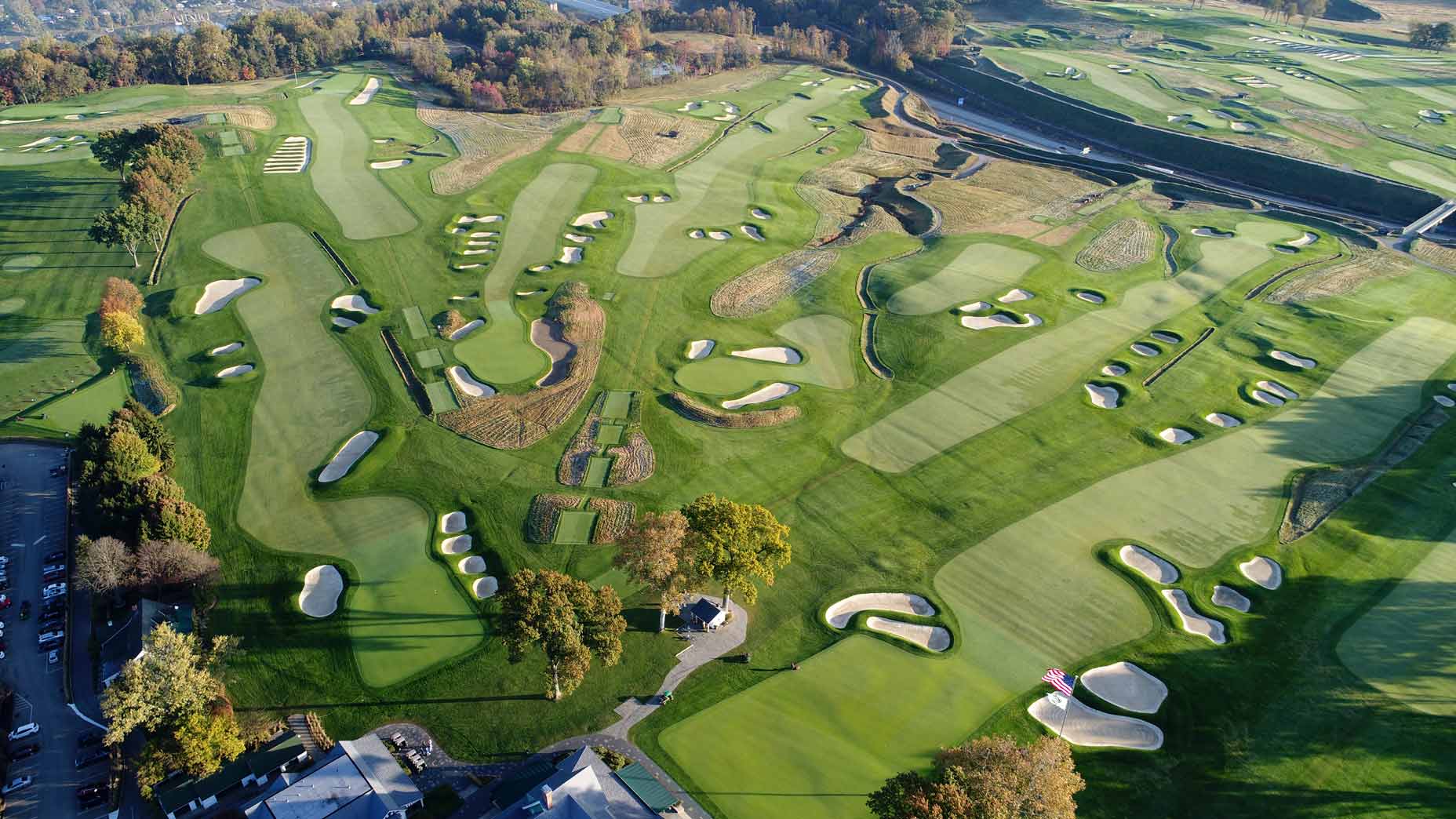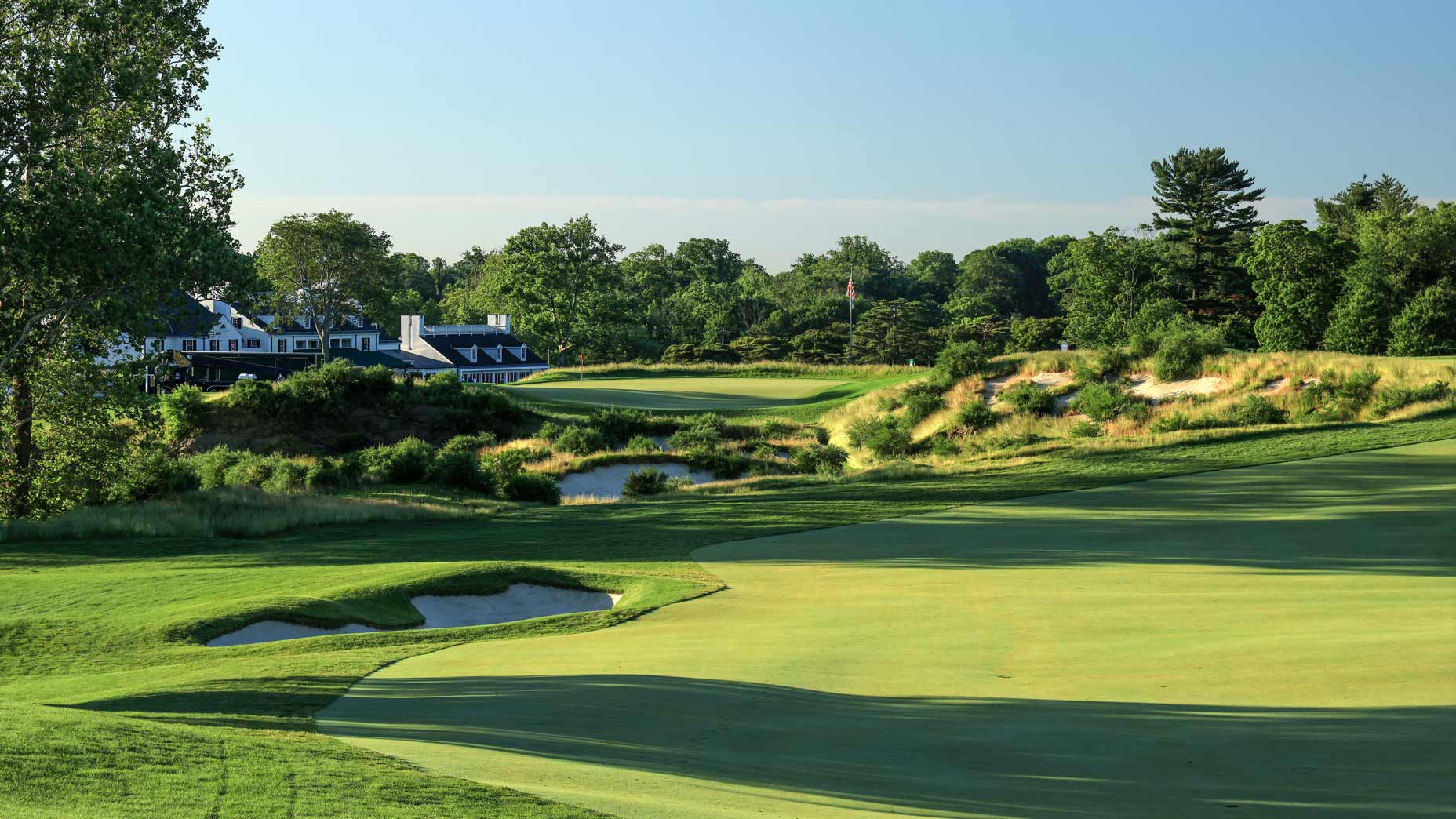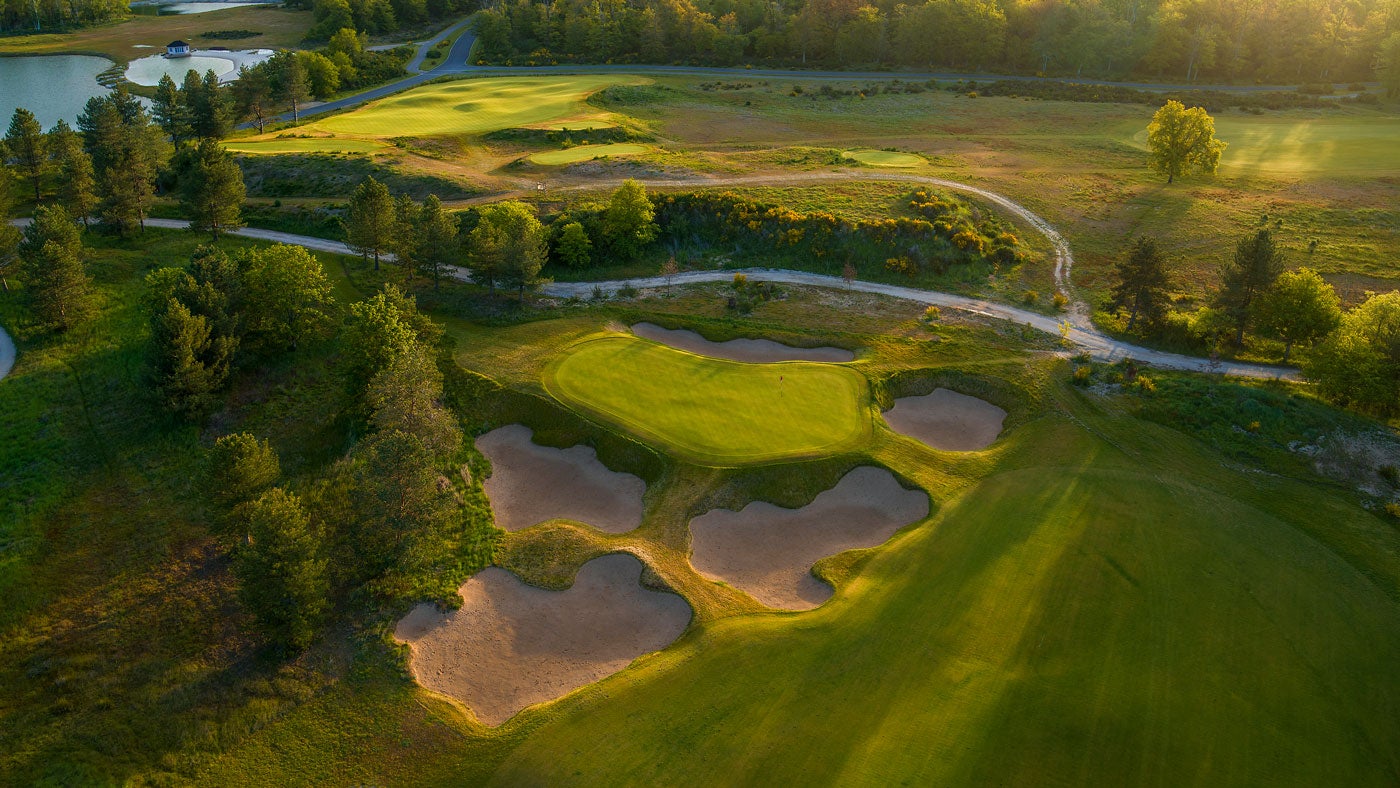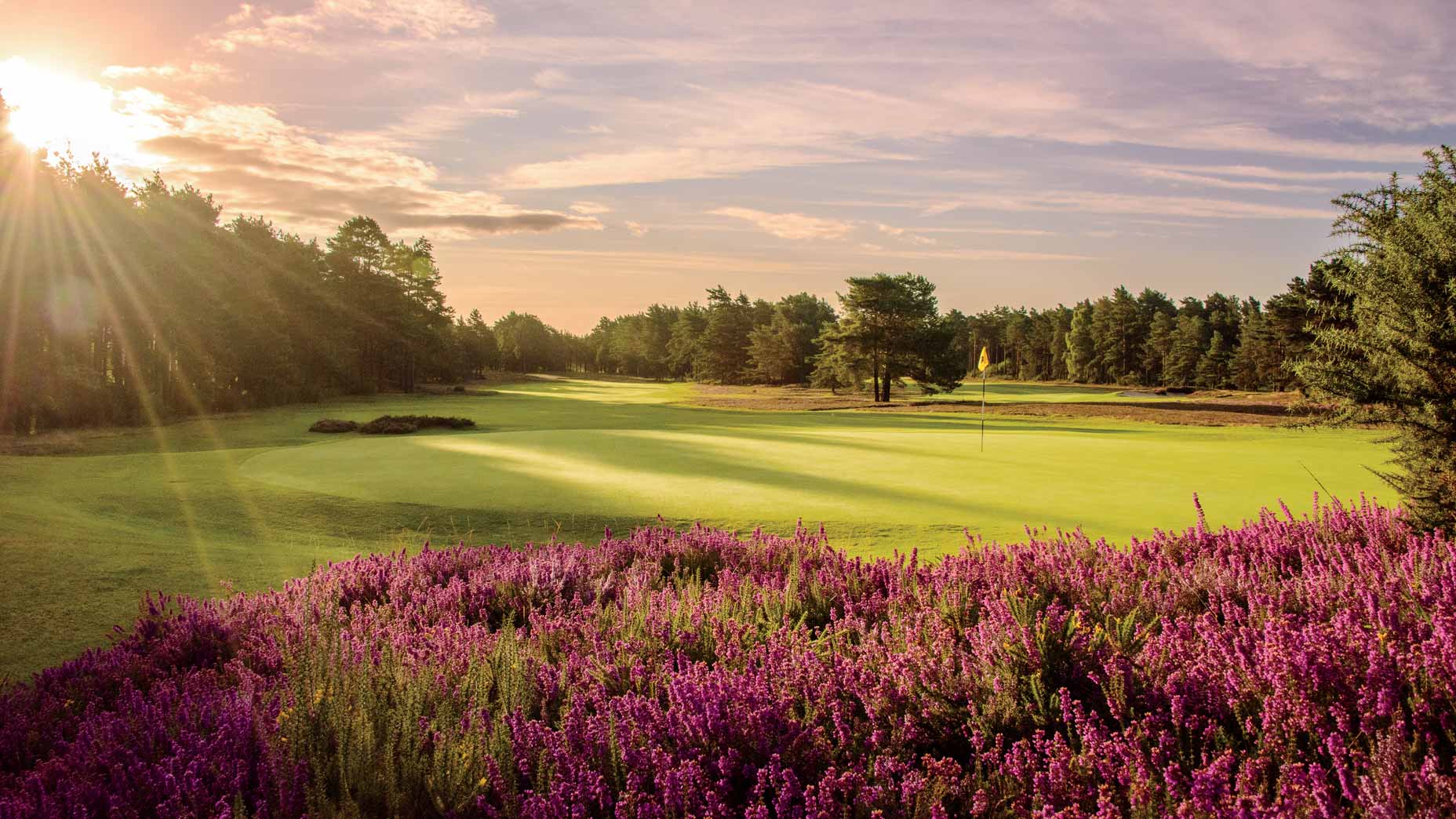The 20 best golf courses in Pennsylvania (2022/2023)

An aerial view of Oakmont Country Club.
Gary Lisbon
As part of GOLF’s course rating process for 2022-23, our fleet of 100-plus expert panelists identified the best golf courses in Pennsylvania. Browse the links below to check out all of our course rankings, or scroll down to see the best courses in Pennsylvania.
GOLF’s other course rankings: Top 100 Courses in the World | Top 100 Courses in the U.S. | Top 100 Courses You Can Play | Top 100 Value Courses in the U.S. | America’s Best Municipal Courses | The 100 Best Short Courses in the World
SYMBOL GUIDE
1 = Top 100 Course in the U.S.
P = Public/Resort Course
V = Top 100 Value Course in the U.S.
M = Top 30 Municipal Course in the U.S.
Ed. note: Some courses were omitted from our rankings because they did not receive enough votes.
The best golf courses in Pennsylvania (2022/2023)
1. Oakmont (Oakmont) [1]
No course thrives more on looking mean. Indeed, the beauty of Oakmont is how it doesn’t doll itself up, and yet to a purist the view from the crest of the hill on 15 is as breathtaking as any in the country. The barren landscape possesses few trees and no water, just drainage ditches that traverse the land. Daunting carries aren’t the issue either and the greens are huge, so what’s the big deal? The question is answered at the 1st, with a green that follows the natural contours and slopes away from the player. The club prides itself on the pace and firmness of its world-renowned putting surfaces, so let the beating commence! For a course known for its difficulty, what gets lost in the shuffle is the brilliance of its quartet of short par-4s at 2, 11, 14 and 17.
2. Merion (Ardmore) [1]
What makes Merion so distinctive is its remarkable variety. Some par-4s are short, others are monsters with the delta being as much as 200 yards. One par-3 is tiny, at 115 yards; the others measure 236, 246 and 256. The famous par-4 11th, where Bobby Jones clinched the 1930 Grand Slam, is slashed by a creek, while the par-4 16th demands a shot over an abandoned stone quarry. In short, Merion has everything, including sub-air and irrigation systems that lend more control over the firmness and speed of the playing surfaces. The recently expanded greens have created a plethora of new hole locations around the greens’ perimeters, and the player’s chess match with the clever design is more intense than ever.

3. Aronimink (Newtown Square) [1]
Donald Ross always thought Aronimink would be his masterpiece. Over the years, a who’s who of great architects gently tweaked this suburban Philly classic, and while the course never lost its greatness, bits of Ross’s genius were slowly chipped away. Almost 20 years of patient restoration — most recently led by Gil Hanse — have brought Ross’s original vision back to life. Today, the famous Tudor clubhouse overlooks a course with larger greens and more treacherous bunkers that is once again the “supreme test” Ross intended.
4. Fox Chapel (Pittsburgh)
5. Philadelphia Cricket – Wissahickon (Flourtown)
6. Lancaster (Lancaster)
7. CC of Scranton (Clarks Summit)
8. Huntingdon Valley (Huntingdon Valley)
9. Rolling Green (Springfield)
10. Saucon Valley – Old (Bethlehem)
11. Lehigh (Allentown)
12. Manufacturers (Fort Washington)
13. Stonewall – Old (Elverson)
14. Gulph Mills (King of Prussia)
15. Saucon Valley – Weyhill (Bethlehem)
16. Laurel Valley (Ligonier)
17. Philadelphia Country Club – Spring Mill (Gladwyne)
18. Sunnehanna (Johnstown)
19. Longue Vue (Verona)
20. Allegheny (Sewickley)
How we rank our courses
For GOLF’s course rankings lists, each panelist is provided a list of hundreds of courses and “buckets,” or groupings. If they believe the course to be among the best in its category (World, U.S. Value, etc.), they check the corresponding box to place it in a specific bucket. Panelists are also free to write in courses they felt should have been included on the ballot. Points were assigned to each bucket; to arrive at an average score for each course, we divide its aggregate score by the number of votes. From those point tallies, the courses are then ranked accordingly.
The key to the process is the experience and expertise of our panel. Hailing from 15 nations and all the worldwide golf meccas, each of our 115 handpicked panelists has a keen eye for architecture, both regionally and globally. Many of our panelists have played more than 1,000 courses in 20-plus countries.
Because we don’t prescribe a set method to assess courses as other ranks do, no one opinion carries the day — our rank is a democracy. Some panelists believe that enjoyment is the ultimate goal, and thus prioritize design attributes such as width and playing angles, while frowning on upon having to constantly hunt for balls in thick rough. Other panelists value challenge and the demands of hitting every club in the bag. Still others consider a course’s surroundings and overall environment of paramount importance, thereby emphasizing the setting and naturalness of the course. In the end, allowing raters to freely express their tastes is what produces the desired eclecticism in our Top 100 lists.
Panelist integrity is vital. Voters with any ties or associations to eligible courses must flag such conflicts. Panelists also know not to let the quality of their play influence their ballot — same for a luxe experience or clubhouse. While opulence may make for a more a memorable outing, it’s not what GOLF’s course lists are about. Our focus is on design and architecture. We study the course, not the trappings around it.
Need help unriddling the greens at your home course? Pick up a custom Green Book from 8AM Golf affiliate GolfLogix.











